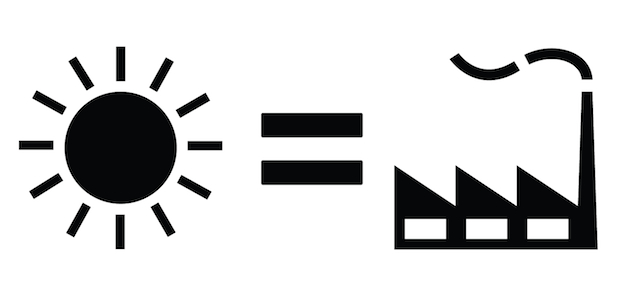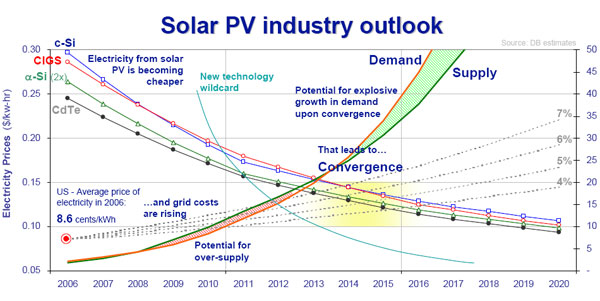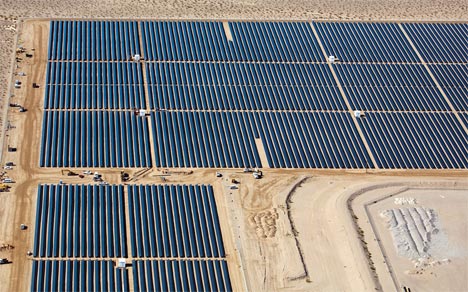
In a radical breakthrough, Siemens scientists have managed to develop a device with a fervent sense of practicality imbibed in it. It is a very small mechanical energy harvester, but in effect its impact can be huge. When integrated with sensors, this adroitly contrived wireless contraption can supply uninterrupted power to small gadgets such as low-power mobile devices, which in consequence can totally nullify the usage of batteries and their problematic recharging.
Basically this tiny device can be thought of as a ‘mini’ power plant, which utilizes stacks of piezoelectric materials that Siemens Corporate Technology helped to design in the 1990s as high-performance precision drives for vehicle engine injection valves. Piezoelectricity is the charge which accumulates in certain solid materials (like ceramics) in response to an applied mechanical strain. The word piezoelectricity itself means electricity resulting from pressure.
In this case, the piezoelectric ceramics expand when an electric voltage is applied to them. However, when a mechanical strain is applied, these materials generate electricity by the above mentioned effect and this is how the small Energy Harvester converts mechanical movement to electricity. The petite size of the contraption allows it to be integrated inside sensors, from which it can use its spring-mass system that is a few centimeters long. It converts movements and vibrations with various frequencies and amplitudes into electricity with a magnitude of several milliwatts.
Though it should be noted that the Energy Harvester is not the first of its kind of device, it, however, conveniently differs from earlier developments. It corresponds to a wider range of frequency and amplitude, allowing it to take advantage of more sources of energy.
Source: PaceToday

An energy converter, which not only taps energy from sunlight but also from the heat emanated by the sun, might just become a significant stepping stone in the realm of green energy. Researchers from the Wake Forest University, Winston-Salem, North Carolina, have come up with a new solar-thermal system that intends to tap both, light and heat from the sun, to produce energy. The thermal system is still in its developmental stages but has the possibility of aligning other small-scale solar inventories to convert homes and smaller buildings into micro-generators. However, the team at Wake Forest is yet to field-test the device.
This cost-effective system could produce two kinds of solar energy under one roof. It is designed with clear, thin tubes with a spray-on photovoltaic back-sheet. This kind of a photovoltaic ‘backing’ helps in converting visible sunlight into electricity. The backing also heats up specially formulated dyed oil that flows through the tubes. This hot oil is then integrated with a conventional geo-thermal heat pump, which would otherwise gather heat from under the ground.
The team at Wake Forest says that the solar-thermal system is able to collect energy which is unavailable to conventional roof-top solar systems. Apropos the team, conventional sun-light capturing
solar panels and systems only collect about 25 percent of the energy available from the sun. They don’t collect infrared light, the longest wavelengths, albeit invisible to the human eye. Conventional solar technology also functions best only at peak daylight hours, while the Wake Forest system has the potential to deliver energy throughout the day. In urban areas particularly, the new system can take advantage of the “heat island” effect, sucking energy from buildings and paved surfaces.
The system can revolutionize the way we think about solar energy and present a really efficient system which in fact cools the earth from global warming.
The researchers are also confident that the system can be made to look aesthetically pleasing. It could be engineered to look like roofing tiles by putting them in squares and integrating them on not just roofs but exterior walls and even windows. All this could go very well with the Obama Administration’s drive toward green and clean energy sources. But in the end it will be the solar-thermal system that will ride on its brilliance and simplicity towards its marketing and not any administration. As the decade begins with nature’s fury all over the planet, a solar-thermal system might just save the world.
Source: Clean Technica

It's a horrible paradox that bad things are generally cheaper: Like Big Macs. Or H&M. Top of this list, of course, is coal power, which is really quite horrible for the planet but is also deliciously cheap to produce. We are, if nothing else, a bottom-line driven society. Besides the rarefied few of us who are willing to drop more money on organic food and clean power just because it's the right thing to do, most people--out of necessity--are going to gravitate toward the cheapest and easiest option. Coal power is so cheap, it's what the power company supplies without you asking. Sign me up! But now, according to new predictions from Bloomberg New Energy Finance, solar power is going to be the wallet-friendly option as soon as 2013. This is faster than was originally thought. For instance, the Bush administration set a goal for this to occur by 2015, and others predicted that as well. Two years ahead of schedule on creating an entirely new cost-efficient and clean power source is really not too shabby.
Grid parity is the technical term for when an alternative energy's cost equals that of the traditional electricity supply--which, in the U.S., is mostly coal. It simply means that solar panels are becoming so cheap to produce and so efficient that they can now battle with the giant coal-fired power-generating structure we've developed. Currently, coal costs about 7 cents a watt, versus 22 cents for solar. But the solar industry is moving so fast that those costs will be equal--at least for utilities--by 2013. In sunny places like California, it's already much closer during peak hours, when the sun is shining and coal power becomes more expensive. Should you prefer your information more technical and in graphic form, see this explanatory chart by Stephen O’Rourke of Deutsche Bank:
In other words, once grid parity is reached, it becomes economically stupid for power companies to not be installing large fields of solar panels to generate the cheapest form of available energy. And while power companies are generally portrayed as evil conglomerates headed by Mr. Burns-esque figures (and for all we know, they probably are), evil conglomerates with shareholders can't really afford to make economically stupid decisions, as much as their leaders secretly want to destroy the environment. They've caught on to that, which is why solar panel installations are expected to double in the next two years. It's not people putting them on their houses driving most of that change, it's large scale installations. You're not going to notice the change, and that's good: No one will have to do anything to get clean solar power. It's just going to come from the same place as your old dirty power.
Bonus stock tip: if these predictions turn out to be right, and the moment of solar grid parity is upon us, it might be a good time to be in the solar panel business. The cheapest product available is usually in pretty high demand.
Follow Fast Company on Twitter. Morgan Clendaniel can be reached by email or on Twitter.
[Image via the Noun Project]
Origami influenced and easy to carry, the new foldable Flux chair is perfect for both events and to complement any apartment. Designed by Douwe Jacobs and Tom Schouten, the Flux quickly folds into a sturdy chair in just ten seconds. Made from a single sheet of weather-proof plastic, the resulting chair looks like a modern sculpture without the weight or the cost.







Read the rest of 21 Origami Influenced Flux Chairs Can Be Stacked to a Height of Just 1 Foot!http://www.inhabitat.com/wp-admin/ohttp://www.inhabitat.com/wp-admin/options-general.php?page=better_feedptions-general.php?page=better_feed
Permalink |
Add to
del.icio.us |
digg
Post tags: "green furniture", Douwe Jacobs, eco design, Flux Chair, green design, Low Energy storage, origami furniture, sustainable design, Tom Schouten, YLiving
The Association of American Physicians and Surgeons (AAPS) released a statement this week warning that current government subsidies and policies surrounding biofuels could push an estimated 35 million people into poverty. The group of physicians is trying to bring to light the fact that most biofuels are currently being made from food crops, like corn, and that subsidies — which are heavily lobbied for by farm interest groups — push more farmers to grow food crops for fuel which in turn raises the price of food around the world. They’ve estimated that the current way of doing things could cause 192,000 excess deaths per year from hunger.



Read the rest of Doctors Say Biofuel Subsidies Could Cause 192,000 Excess Deaths a Yearhttp://www.inhabitat.com/wp-admin/ohttp://www.inhabitat.com/wp-admin/options-general.php?page=better_feedptions-general.php?page=better_feed
Permalink |
Add to
del.icio.us |
digg
Post tags: biodiesel, biodiesel crops, biofuel crops, biofuel hunger, biofuel poverty, biofuels, biofuels from food, biofuels in africa, crops for biofuel, food issues, food scarcity, how biofuel is made, where biofuel is grown


Can clean solar energy offset dirty production methods?

Solar energy is sustainable, sure. But what about making a solar panel? It's an oft-overlooked aspect of an industry that is given a green halo because of what it contributes to our renewable energy future. The Silicon Valley Toxics Coalition, an organization dedicated to e-waste advocacy work, explores the dirtier side of solar in its 2011 Solar Scorecard, which rates solar providers on whether their solar panels come from sources as clean as the energy they produce.
The scorecard, now in its second year, received responses from 46% of the PV industry market, most of whom score well (the scorecard gives companies a 1 to 100 rating) on factors like disclosure, supply chain monitoring, green jobs (work environments where employees aren't exposed to toxic chemicals), and recycling. An impressive 70% of respondents say they would support mandatory recycling, and major companies like First Solar (score: 87), Trina Solar (score:89), and Abound Solar (score: 87) appear to be models for the industry.
But therein lies the problem. It's easier for large companies to maintain sustainable supply chains because they have the resources to do it. The smaller companies are just struggling to turn a profit. "Smaller companies working on sustainability early need to be applauded. They are unusual in their efforts as startups," says Sheila Davis, executive director of SVTC.
Even the most sustainable companies have some work to do. Only two of the solar companies listed on the scorecard--Sunpower (score: 85) and AXITEC (score: 64)--have managed to eliminate toxic cadmium and lead from their supply chains. And there is no green supply chain standard for the industry (the electronics industry has a code of conduct, and the auto industry offers common training for its suppliers). "Companies are doing things on their own, but there are not any across the board standard that they are following in a lot of areas, especially in chemical use and supply chain management," explains Davis.
But perhaps the most troubling aspect of the industry is that we have no comprehensive way to tell how poorly the majority of solar companies are managing their supply chains. Only 46% of the solar market responded to the SVTC's scorecard request, so what are all the other companies doing? If they didn't respond, they probably don't want us to know.
Reach Ariel Schwartz via Twitter or email.
“This underlines the fact that also (or even especially?) green products need a green supply chain and production practices to be green”

What is it?
Since their inception, conventional solar panels have been costly to produce. But with the spurt of recent advances made in the field of solar technology, researchers have managed to come up with a new type of flexible, large-sheet, reel-to-reel printable plastic solar cells that can be mass-produced in a cost effective way. These printable solar cells are created with particles of semi-conducting titanium dioxide that are coated with dyes that can absorb light. These particles are then immersed in an electrolyte and this solar cell solution is used as ink to imprint thin plastic films. Analogous to the working of an ink-jet printer, this polymer printing technology has been in use in over 20 countries.
Trends:
1. CSIRO Develops Printable Solar Cells:

Researchers from Commonwealth Scientific and Industrial Research Organisation (CSIRO) contrived flexible, ultra-thin and light solar cells. These advanced solar cells can be printed out like money at an efficient rate. And also, according to CSIRO, the solar cells can be used on water surface since they can float on water!
2. Cheap, printed solar LEDs to light up off-grid African villages:

Danish researcher Frederik Krebs has conscientiously created an LED lamp that can be conveniently applicable in many fields. Integrated within a lithe, printable solar panel, this lighting fixture could replace conventional lamps and even kerosene lamps, especially in those places where there are lack of proper electrical infrastructure. Printed out in reams, the dual light/solar panel can be rolled up to mimic a lamp, and has the potential to provide light to around 1.5 billion people around the world, who are currently living without electricity.
3. MIT makes more progress on printable solar cells:

Researchers from Eni-MIT Solar Frontiers Research Center have been successful in printing a solar cell on paper by using an organic nanoscale semiconductor material. Utilizing the ink-jet printer technology, the researchers have only managed to imbibe an efficiency of 1.5 to 2 percent to the solar cells, but the overall efficiency is expected to rise further as the technology improves in the coming years. Moreover, the solar cells have multiple layers, each of which can absorb different wavelengths of incident sunlight. Taking advantage of their docility these thin-film solar cells can be wrapped around plastic, paper, or metal to increase their efficiency to 15- 25 percent.
4. Inkjet-printable Solar Panels:

Konarka Technologies has conveniently come up with a printable solar panel film that utilizes a common inkjet printing process. Basically in this adroitly conceived technology, the ink inside the printer is replaced with the solar cell material and a thin flexible sheet of plastic is used in place of paper. Hence, the manufacturing process becomes much more easily achievable.
The Benefits:
Printable solar cells can provide us with a plethora of benefits, especially in comparison to conventional solar panels. First, when it comes to the cost factor, printable solar panels can unequivocally be cheap and mass-produced. Moreover, because of their malleable nature, they can be incorporated on rough and uneven surfaces. Some of them can be conceived to be thin enough to act as semi-transparent coverings on window surfaces. Also, as mentioned earlier, they can be made to float on water especially as a means of effectual space management (solar farms on land do tend to take up a lot of space).
The Lowdown:
Probably the major problem that can be associated with printable solar cells is their significantly lower efficiency (the percentage of electric power converted from incident light). The conventional polycrystalline and mono-crystalline solar panels exhibit an efficiency of around 19 percent, whereas printable solar cells have an efficiency of around the mark of less than 4 percent. Furthermore, they can also be easily damaged by intense sunlight, temperature fluctuations, high oxygen content and even windblown debris. But, in the years to come, researchers are looking forth for innovative methods to increase the efficiency to at least 10 percent, and also make the solar cells more adaptable to adverse conditions.
The Impact:
They can make a huge impact specifically when we judge the technology from the perspective of sustainability. Forgoing the need for all the complex paraphernalia of electrical wiring, such clean and ‘green’ technology imbibed devices can be used in relation to most surfaces and that too in a much more cost effective manner. Printable solar cells do make use of advanced nanotechnology in their production. With the development and effectual usage of nanoparticles, such solar cells can be made feasible and pliable in comparison to the traditional bulky solar panels. So, it may be sooner than later that one day we would be witnessing a worldwide solar power grid - generating a totally sustainable and clean form of power, utilizing printable solar cells.



Comments by our Users
Be the first to write a comment for this item.